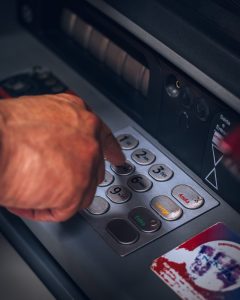Leverage and balance are two important concepts in forex trading. They are closely related and play a critical role in determining the success of a forex trader. Understanding these concepts is essential for traders who want to make informed decisions when it comes to managing their forex trading accounts.
Leverage in Forex Trading
Leverage is the ability to control a large amount of money in the forex market with a relatively small investment. It is expressed as a ratio and represents the amount of capital that a trader can borrow from a broker. The most common leverage ratios offered by forex brokers are 50:1, 100:1, 200:1, and 400:1. For example, if a trader has a leverage of 100:1, they can control $100,000 worth of currency with a $1,000 investment.
Leverage allows traders to amplify their potential profits, but it also increases the potential risk. That is because losses are also amplified in the same way. Therefore, it is important for traders to use leverage wisely and only risk an amount they can afford to lose.
Traders should also be aware that higher leverage means higher margin requirements. Margin is the amount of money required to open and maintain a position in the forex market. Brokers require traders to have a certain amount of margin in their accounts to cover potential losses. Therefore, traders with high leverage ratios must have a larger margin in their accounts to support their positions.
Balance in Forex Trading
Balance in forex trading refers to the amount of money a trader has in their trading account. It is the total value of all the positions the trader has opened in the market, including profits and losses. The balance is constantly changing as the trader opens and closes positions in the market.
The balance is an important metric that traders use to track their performance in the forex market. It is the basis for calculating the equity and the margin level of the trading account. The equity is the difference between the balance and the total amount of money used to open positions in the market. The margin level is the ratio of equity to margin, expressed as a percentage. It indicates the level of risk in the trading account and whether the trader has enough margin to support their positions.
Managing Leverage and Balance in Forex Trading
Managing leverage and balance is crucial for successful forex trading. Traders should always consider their risk tolerance and financial situation before choosing a leverage ratio. It is also important to use risk management strategies, such as stop-loss orders, to limit potential losses.
Traders should also monitor their balance regularly and ensure that they have enough margin to support their positions. They should avoid over-leveraging their accounts and risking more than they can afford to lose. It is advisable to keep a margin buffer to account for potential losses and avoid margin calls.
In conclusion, leverage and balance are two critical concepts in forex trading that traders must understand. Leverage allows traders to control large amounts of money with a small investment, but it also increases the potential risk. Balance is the total value of all the positions a trader has opened in the market, and it is the basis for calculating equity and margin level. Traders should manage their leverage and balance wisely to avoid unnecessary risks and maximize their profits.





